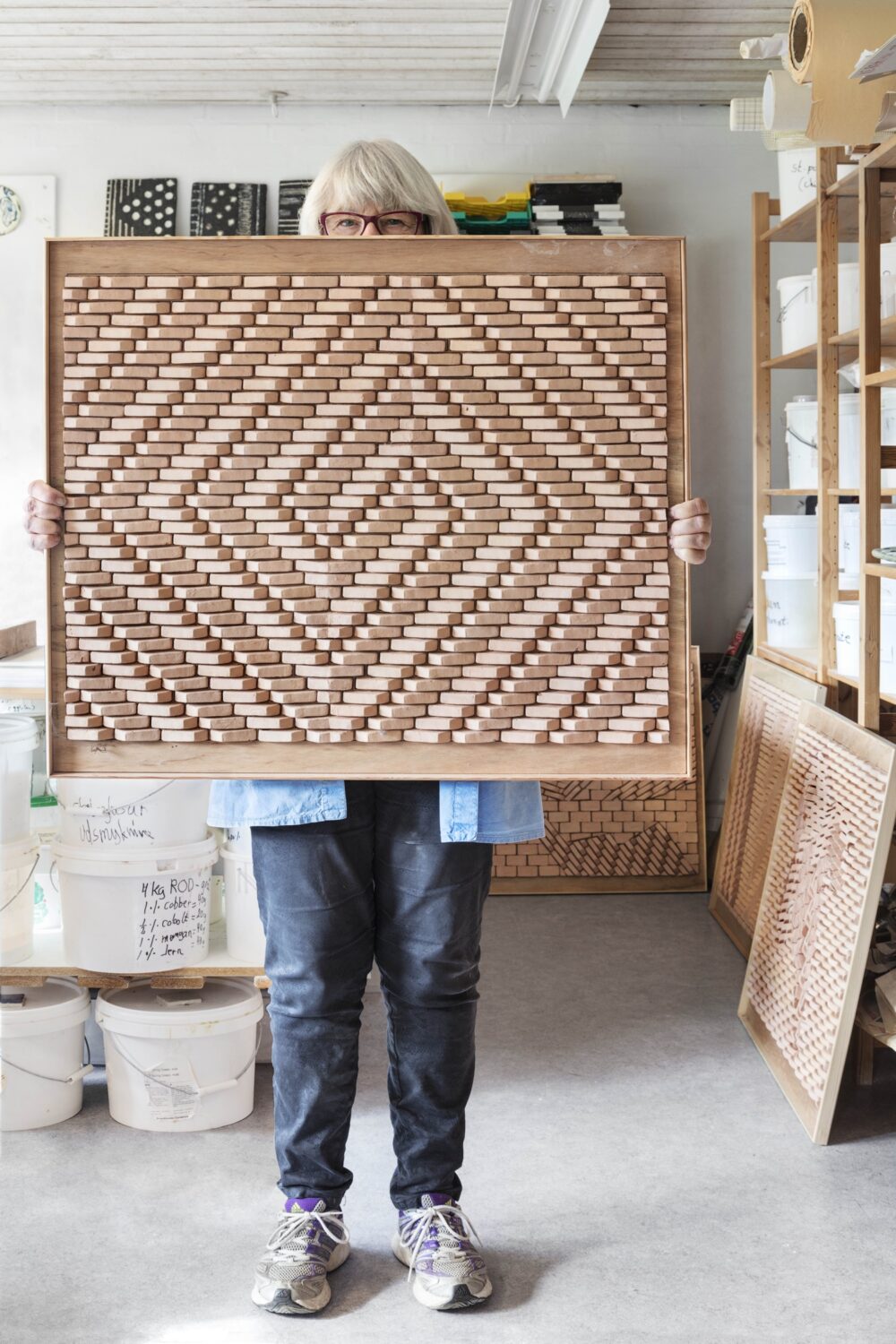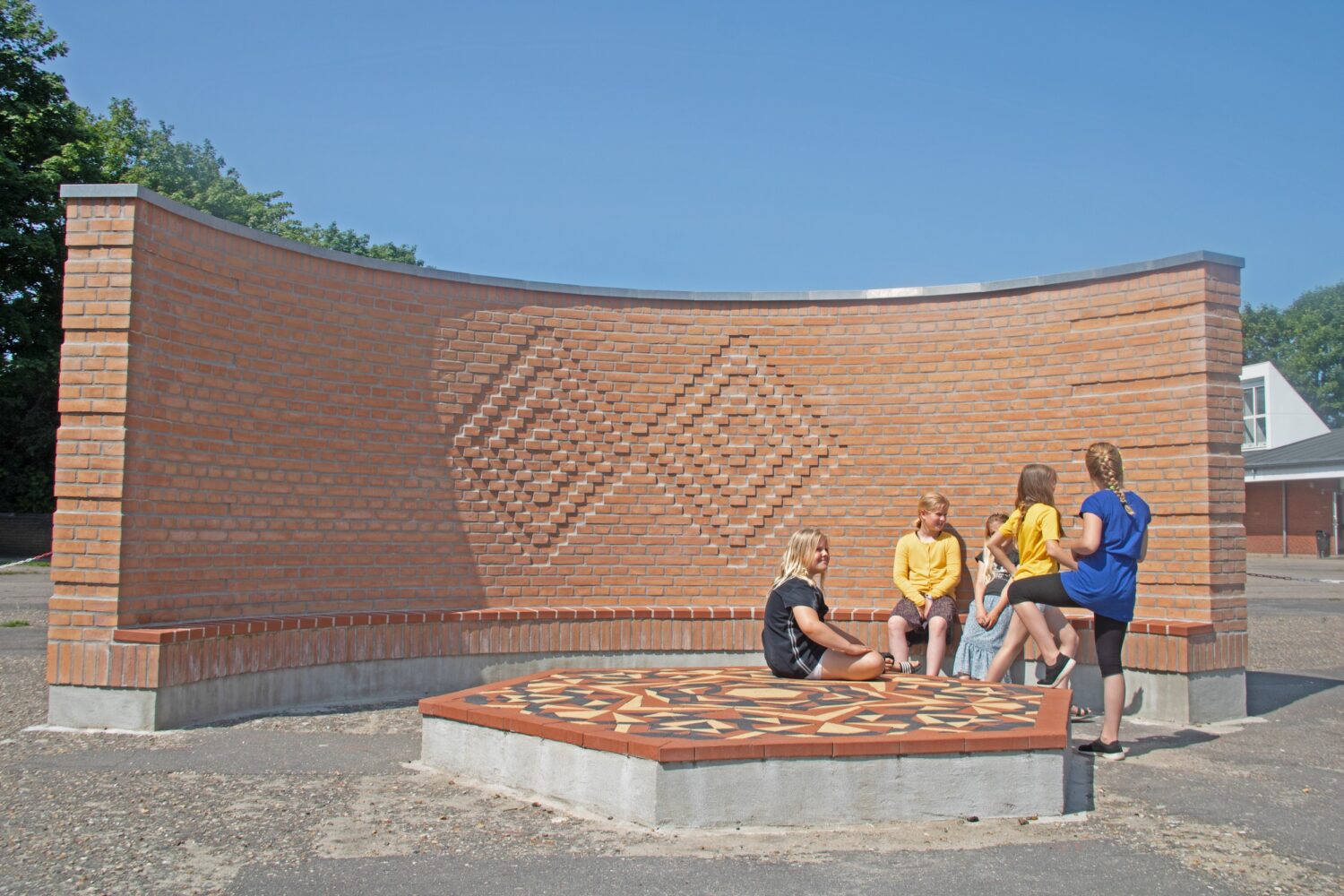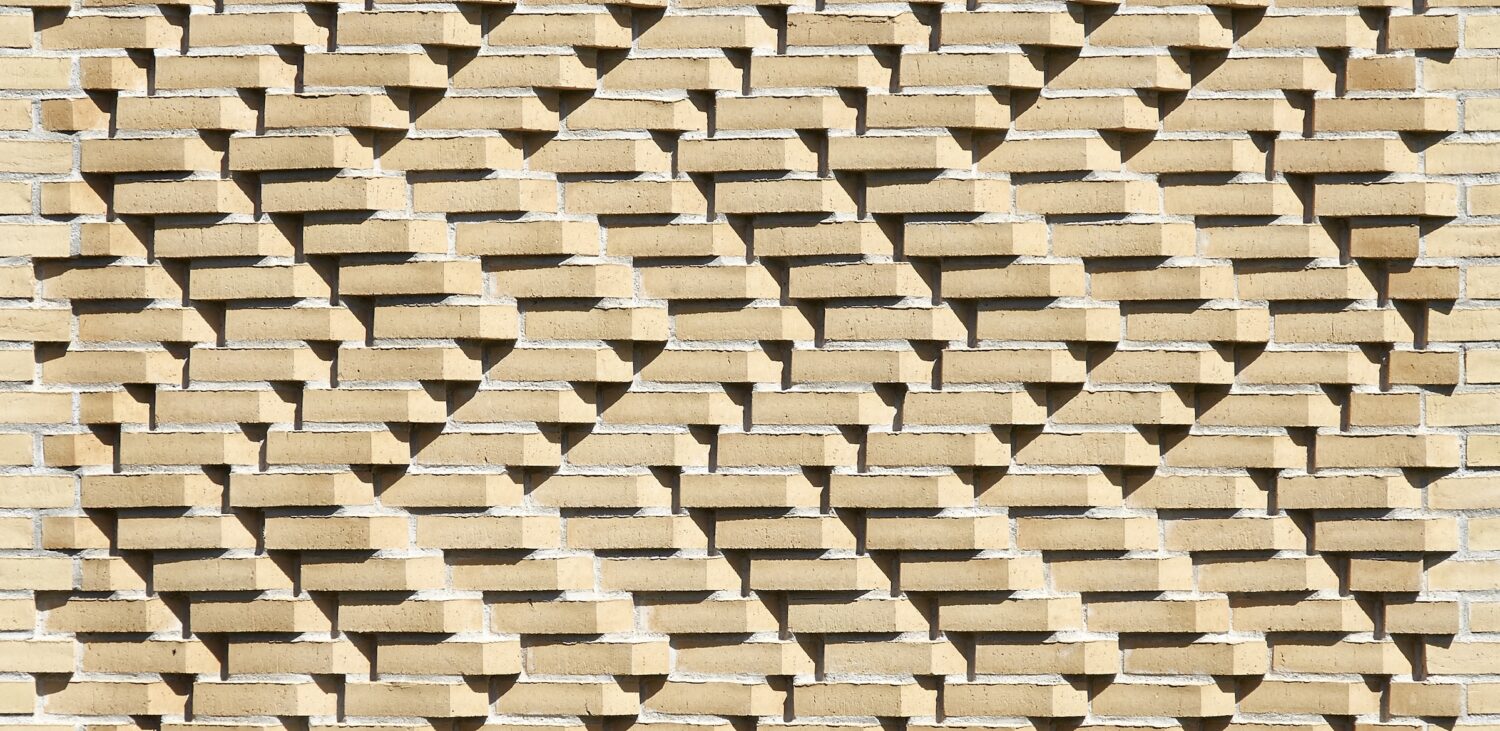Like all great love stories, it started with a crush. Ceramicist, Karen-Lisbeth Rasmussen, always noticed the distinctive details of masonry, the crafts and skills with which it was created:
“When we were on vacation, my husband took pictures of the kids while I took pictures of cornices,” she says with a laugh.
Although as a ceramist she has always been fascinated by bricks and masonry, she never imagined that she would get to work with it herself, because bricks belong to another craft, the mason trade.
But by chance, Karen-Lisbeth Rasmussen discovered that Hjørring’s technical school was part of the project ‘Masonry in motion’ in 2007, she says:
“The project was about rethinking masonry and was a nationwide project. Out of curiosity, I picked up and inquired about the project, which mostly had construction technology teachers and architects attached. It turned out that they wanted an artist involved in the work. That was the start of my now 15-year brick project and collaboration with Egernsund Tegl.”

Rethink a brick
Karen-Lisbeth Rasmussen was given the task of ‘rethinking the brick’. To an outsider it may sound like a special task, because a brick has a fixed format, but for Karen-Lisbeth Rasmussen it was a challenging and exciting task, which she took on with a bent neck.
‘I made what I call relief stone. They have the normal brick dimensions, but with different relief effects on the surface, it gives the wall a lively expression. The mason can use the relief stones in the masonry joints they normally use. This is a great advantage. A beautiful living wall with light and shadow effects then appears automatically,’
she explains, adding that the bricklaying profession has a proud tradition, and the close collaboration with another professional group has been both a rewarding and exciting eye-opener for her and for the bricklayers who contributed.

When she is tasked with creating an artistic expression in a brickwork, she creates models in mini-bricks. It makes it possible to get a real and physically tangible impression of what the finished work will look like, which is quite different from making computer-animated models. She describes working with bricks as painting; small elements become larger surfaces that take on a lively, sensual expression. The relief stones create play between light and shadow, so that depending on how the light falls, the wall will look different depending on whether it is morning or evening sun falling on it.
Karen-Lisbeth Rasmussen has no doubt that artistic and well-executed brickwork gives buildings an aesthetic added value, and that it generally adds value to involving artisans in built environments.
‘The various skills come into play when artisans are involved, and then something unexpected happens,’ she explains and emphasizes the importance of professional pride, which together with curiosity and the willingness to experiment can create unexpected effects and beautiful buildings.
Beautiful, sustainable, cheap and long-lasting
‘Brick is the most beautiful building material we have,’ says Karen-Lisbeth Rasmussen. It is also sustainable, cheap and long-lasting, so really we should use it to a much greater extent, she believes. In addition, it is a material we have known and used for hundreds of years – in other words, it has proven its many qualities. Still, many believe that an artistic brickwork will be prohibitively expensive. But Karen-Lisbeth Rasmussen, together with a mason, sat down and calculated that side of the matter, and in the end it turns out to be quite a small additional expense that must be accounted for in order to get an aesthetic and unique expression on a building that can stand for hundreds of years.
‘It is an affordable way to give a building identity and aesthetic added value. As humans, we need to feel embraced by the place we live. We can feel a sense of belonging to a building that has a special expression,’ says Karen-Lisbeth Rasmussen, adding an anecdote from yesterday’s walk with the dog. The trip took place in a newly built residential area:
‘I met a little girl who wanted to pet my dog. I asked her: ‘Do you live here?’ And the girl replied that she lived in ‘the house with the red garden gate’. Because it was the only thing that separated the house from all the others. The houses must have an identity that we can feel. Otherwise, it’s just boxes without identity.’

Brick on time
The possibilities for creating living and sensuous buildings with brick as a form of artistic expression are just around the corner. Nevertheless, Karen-Lisbeth Rasmussen believes that many people have not yet opened their eyes to the many possible uses of the brick:
‘It requires that you spot it. It must be included so that architects, builders and housing associations are told that it is an affordable way to give a building added value – that bricks can give built spaces some exciting visual expressions.’
It is not only about aesthetics when it comes to construction, because a building must of course function in a purely practical way. But it must also be a place we know – a place that is shaped over time and by the people who live in it or surround it. A brick building ages gracefully. It does not fall in value, on the contrary, it gains more value over time, says Karen-Lisbeth Rasmussen and concludes:
‘You love the unique and what time has shaped. After all, it is about life.’
Bio
Karen-Lisbeth Rasmussen is a trained ceramicist from Design School Kolding in 1984-1989. She has, among other things, work with masonry, unique ceramics, tiles and tiles, sculptures and decoration. In 2017 and 2021 she participated in the Biennale for Crafts & Design. She is currently working on the project “Handicraft garden” in Vejle, where she contributes with a 15-metre long wall around a park area.
Theme: Urban Space
In connection with the Architecture Capital 2023, Formkraft explores crafts and design in public spaces and built environments. This thematic publication provides a platform for the latest research and work within crafts and design.
Where and how is contemporary crafts and design established in the urban space? What actors are involved? What lessons can we learn from history?
Additional reading
The Formkraft archive holds a treasure trove of articles about our shared history of crafts and design. These articles tell the story of professional development and Danish cultural history from 1948 to the present. Search for various topics in the archive or browse through the journals on the Journal Shelf.
Atmospheric layers in a human space
Receive a newsletter
Sign up for Formkraft’s newsletter and receive information about new articles as well as tips on relevant conferences and books. Sign up here.


